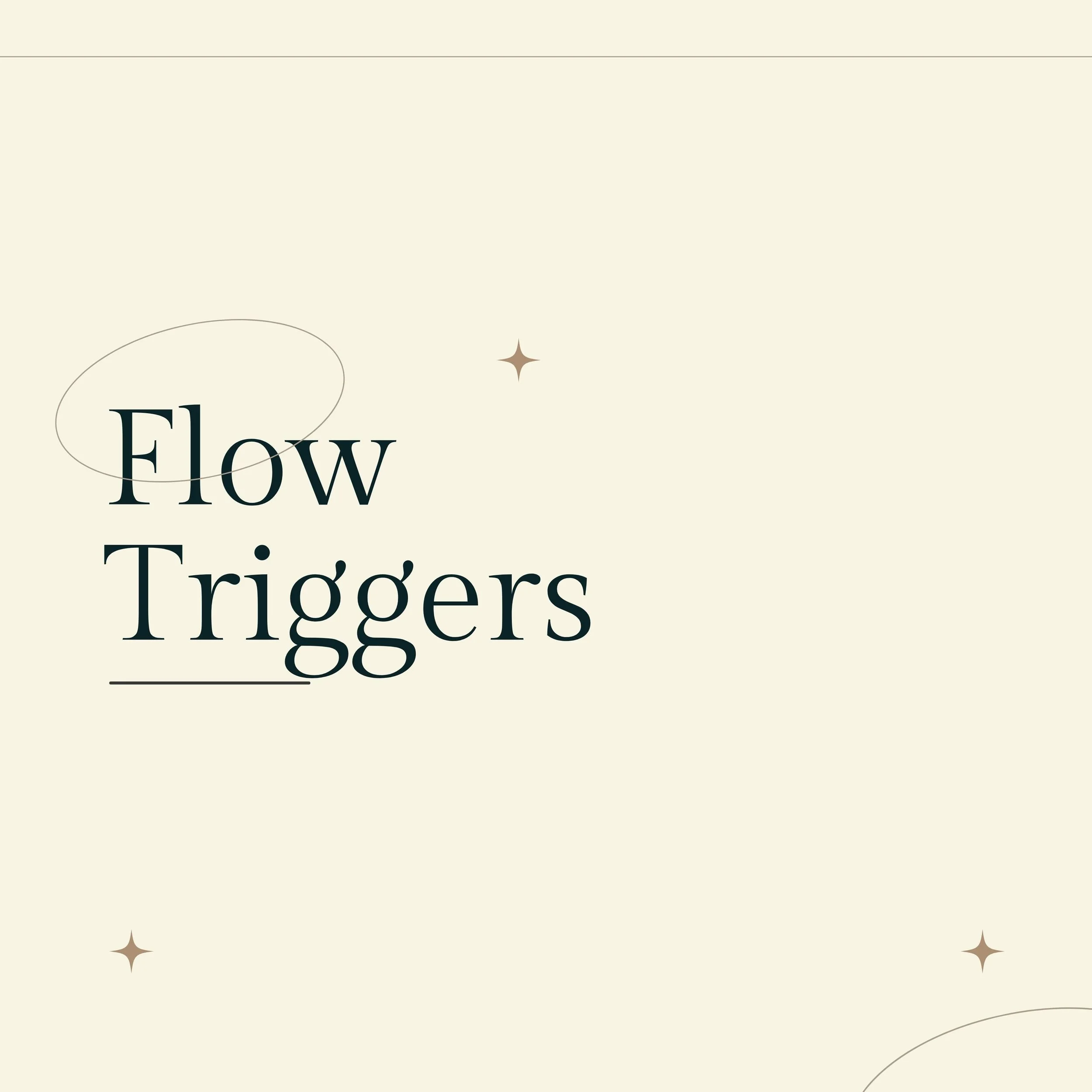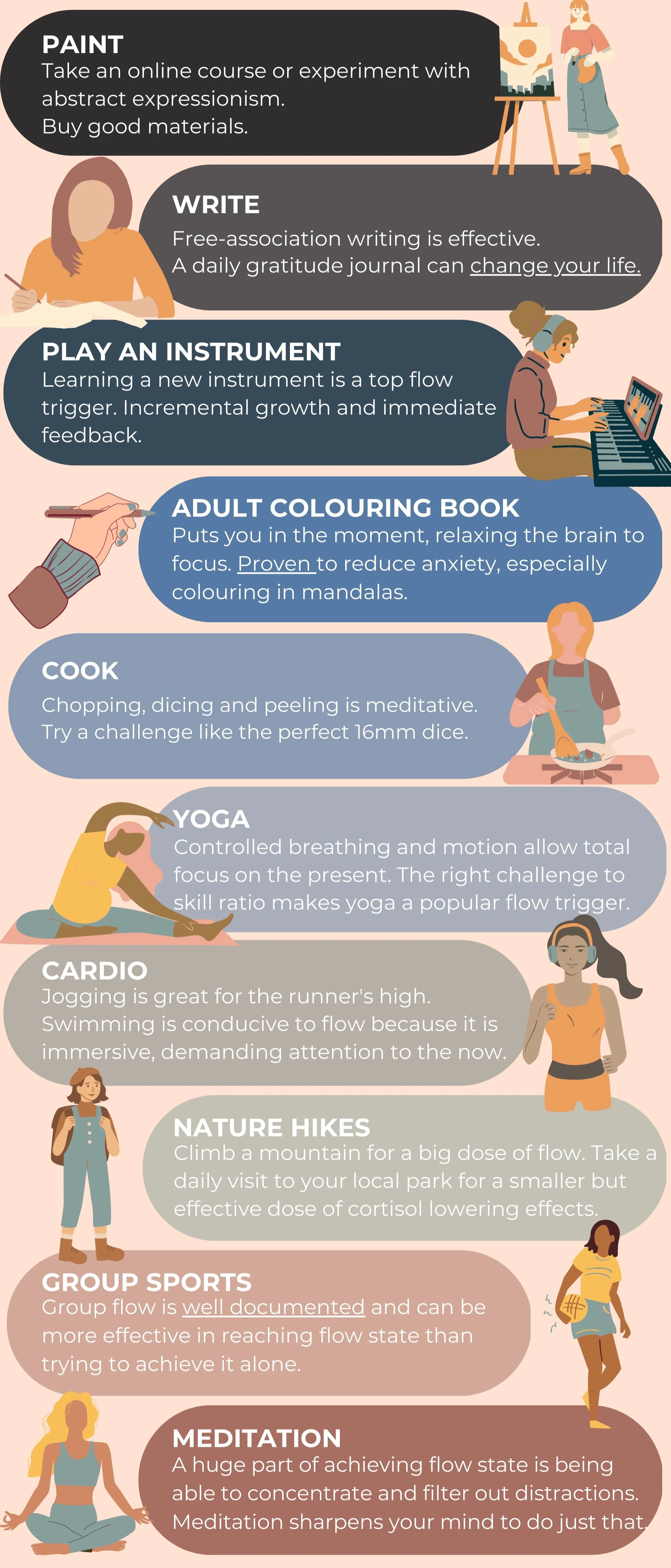Daily Schedule
Use this resource to help schedule your day with all the Flowly changes included. This document brings the whole program together and outlines where you can include new daily habits to find flow in your entire day. Suggestions on when to take supplements, when to eat snacks and even mini lifestyle hacks like breathing sessions are all included.
Click Image to Print
Checklist
Everyone is on their own healing journey. Don’t compare your first chapter with someone else’s 30th chapter. Start with small changes that you can stick to. Below is a list of daily habits that are important to the Flowly program, beyond supplements and flow triggers. Remember, you can’t supplement for a poor diet, and you can’t rely completely on diet if you don’t change your perspective and daily habits. Lifestyle changes are a key pillar in the holistic Flowly Program. If it’s too much to add them all at once, go at your own pace and add them in slowly. With that in mind, if you’re able to commit fully in the 8 weeks, you will reap all the rewards possible in this program. Print this image off and tack it somewhere that you’ll see it daily.
Flow Triggers
Positive Psychology is the scientific study of what makes us happy. The Flowly program utilizes evidence-based techniques to enter into a flow state, which in turn produces greater happiness scores in individuals. When you enter into a flow state, the rewards are immediate and long lasting as you feel a sense of great satisfaction and joy. You may use the list provided as many are proven ways to trigger a flow state. Or you can experiment with finding your own. If the experience is highly gratifying, you lose sense of time while doing it and feel most like yourself, then that is your flow trigger!
Find Your Flow
Recommended Supplies
A jam-packed list of products we recommend to make your healing journey that much easier. Non-biased, commission-free recommendations from a trained nutritionist.
Recommended Reading
Recommended Videos
Guided Cyclic Sighing Video
Recommended Apps
A free mindfulness app and visualization library
Gratitude
Daily reminders to write down gratitude
Great sleep casts, meditation tutorials and more
Breath work guidance
Mindful Eating
This one habit can completely transform your digestion. Sitting down to a meal, showing gratitude for what’s before you and eating with your hands in a mindful way are all eating habits that have been practiced for centuries by our ancestors. When you eat mindfully, you prime your engine for digestion. All the digestive juices in your mouth and stomach start to release and the result is better digested food. Way less bloating, less constipation or diarrhea, even less acid reflux. Practice mindful eating and remember, your stomach doesn’t have teeth, so chew your food!
Mindful Eating Tips
Anxiety Quick-Fixes
Anxiety Quick-Fixes and more
When you’re feeling an anxiety attack coming on, there are many techniques you can use to reduce the duration. One of the best things to do is not to judge it, but be curious. Watch as an observer, not a participant, as your body and mind react. This alone is often enough to stop the episode. Remember, you are not your emotions. Thoughts and emotions may come and go, but it doesn’t mean you cannot control them. Anxiety symptoms (or panic attacks) can be different for everyone, Here are a few common symptoms:
Shortness of breath
Tight feeling or pain in the chest
Tingling sensation in hands or feet
A feeling of overwhelm and fear
A choking sensation or lump in the throat
Irregular heart beat
Trembling
Try any of the following techniques to get you out of an anxiety attack quicker:
Panic attacks and episodes of acute anxiety can sometimes creep up on us without any warning. Knowing what to do in these situations to eliminate them quickly can reduce the associated symptoms of fear, panic, hyperventilation, increased heart rate, numbness, tingling and light headedness.
When you are experiencing a panic attack, your body has shifted to using your sympathetic nervous system (also known as fight or flight or survival mode). The sympathetic nervous system is a necessity for survival if you are running from danger or facing an extreme situation. But sometimes it can become activated and put you into acute anxiety or distress even when there is no immediate threat or danger present. This is what is known as a panic attack.
The key to alleviating panic attacks and acute anxiety is being able to quickly tap into your parasympathetic nervous system (also known as rest and digest mode). When you are able to activate your parasympathetic nervous system, you are able to enter a state of calm, reduce your heart rate and eliminate the symptoms associated with a typical panic attack. When in a parasympathetic state, your body works at it’s best. This is when your body heals, grows, nurtures and digests. This is when YOU feel at your best, in a state of calm, where you are relaxed and at peace. Ideally, your body should be in this state almost 24/7, unless there is an imminent threat or emergency.
.
When you feel a panic attack coming on, what you need to do is find the easiest way to get back into parasympathetic mode. The 5 methods shown above are quick and easy techniques that have been proven to work for people suffering from acute anxiety and panic attacks. These methods are supported by evidence-based trials and/or medical literature. Learning these techniques and practicing them often will help you to be better prepared to act quickly when acute anxiety or panic attacks arise.








































